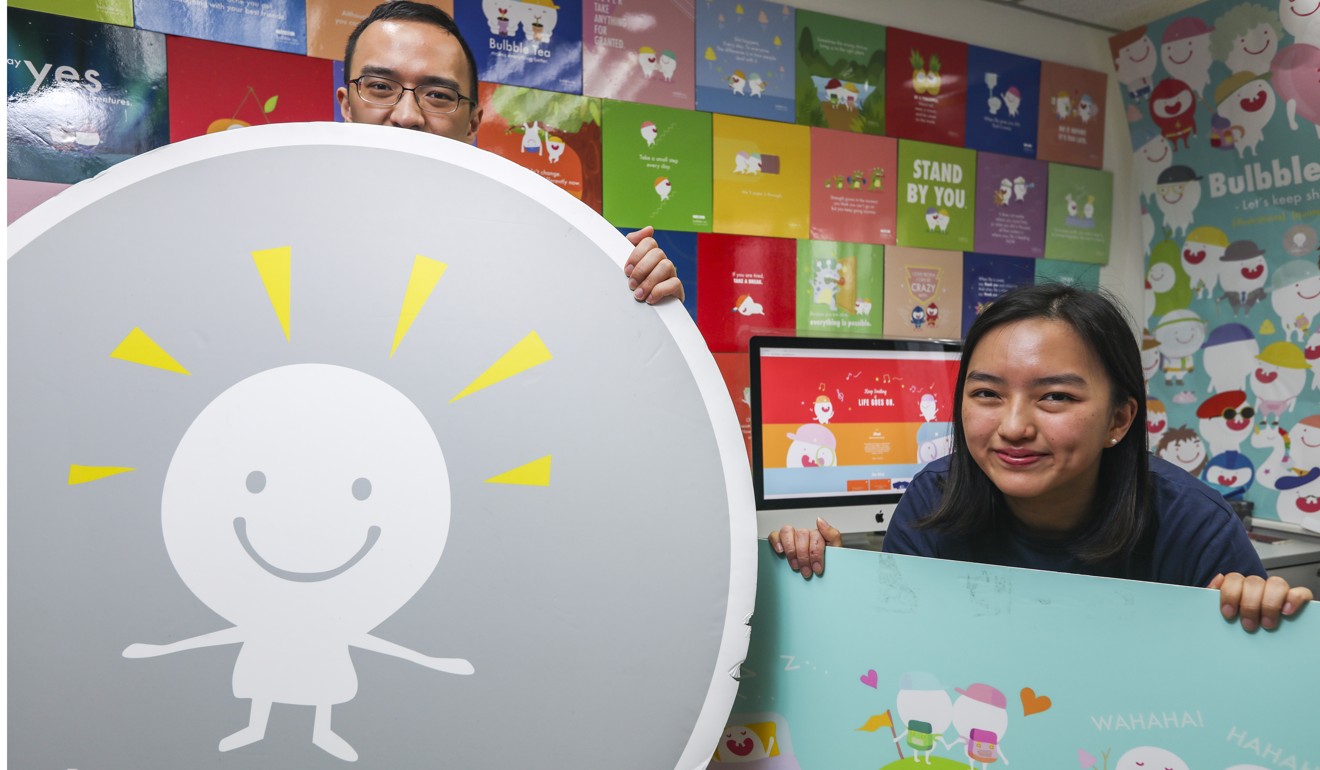
Hong Kong toys: new generation bids to join father of the rubber duck, makers of Teenage Mutant Ninja Turtles and VTech in being next big thing to be made in city
- Entrepreneurs want to sell original Made in Hong Kong toys as well as mass-produced licensed items
- At its peak in the 1970s, city had 1,100 factories employing 40,000 people and producing 35 per cent of the toys for the United States

Isabelle Nguy Hing-wei quit her full-time job as a designer to become a toymaker, setting up her own company, Bulbble Inc, in 2015.
“Toys are magic,” the 28-year-old said. “They bring back fond memories of my childhood when I received toys at Christmas or on birthdays and watched many cartoons.”
The name of her company is no misspelling. She explained that “Bulbble” meant everyone could be a light bulb in the world, spreading happiness and encouragement.
So her cheerful products, ranging from toy characters to decorative items and online stickers, come with uplifting messages such as “Be proud of who you are” and “Beauty is not in the face, beauty is a light in the heart”.

The company has invested about HK$500,000 (US$64,100) so far in developing products such as stuffed toys and stationery, and is planning to roll out small “capsule” toys for vending machines especially popular in Japan.
Nguy represents a new breed of entrepreneur hoping to keep Hong Kong in the game in a big way. Her company not only allows other firms to make its products through licensing; it also sells original Made in Hong Kong toys.
At its peak in the 1970s, the city had 1,100 factories employing 40,000 people and producing 35 per cent of the toys for the United States, the world’s largest market.

The factories were mostly licensed by foreign companies such as Walt Disney, Hasbro, Mattel and Warner Bros from the US, Germany’s Zapf and Japan’s Bandai and Takara Tomy to churn out everything from plush dolls to die-cast cars, and toy versions of popular cartoon characters.
Hong Kong produced few original products, though there were some big hits including the yellow rubber duck made by toy tycoon Lam Leung-tim of Forward Winsome Industries, Teenage Mutant Ninja Turtles by Playmates and evergreen educational toys by VTech.

In 2018, the value of the world’s toy market rose 5.9 per cent from the previous year to US$218.3 billion. Hong Kong exported HK$45.2 billion worth of toys in the first 11 months of 2018, a 1.6 per cent rise from the same period the year before.
The US was the world’s biggest toy market, snapping up 25.9 per cent of them, followed by China (21.5 per cent), Japan (8.33 per cent), Britain (4.5 per cent) and France (3.71 per cent), according to the consultancy Euromonitor International.
World toy consumption is forecast to hit US$260 billion in 2022, with the Asia-Pacific region leading annual growth in demand, while Euromonitor forecasts that China, with its massive emerging middle class, will overtake the US to be the No 1 consumer next year.
Trade war? Time to get creative, be original
However, the industry has been disrupted massively by consumers’ growing desire for electronic games and gadgets, rather than dolls, trains and other toys popular in the past.
Then there is the uncertainty of a trade war, with US President Donald Trump threatening punitive tariffs on all of China’s US$550 billion exports. Toys have been spared so far, except for those with chemical and electronic components slapped with a 10 to 25 per cent tariff.
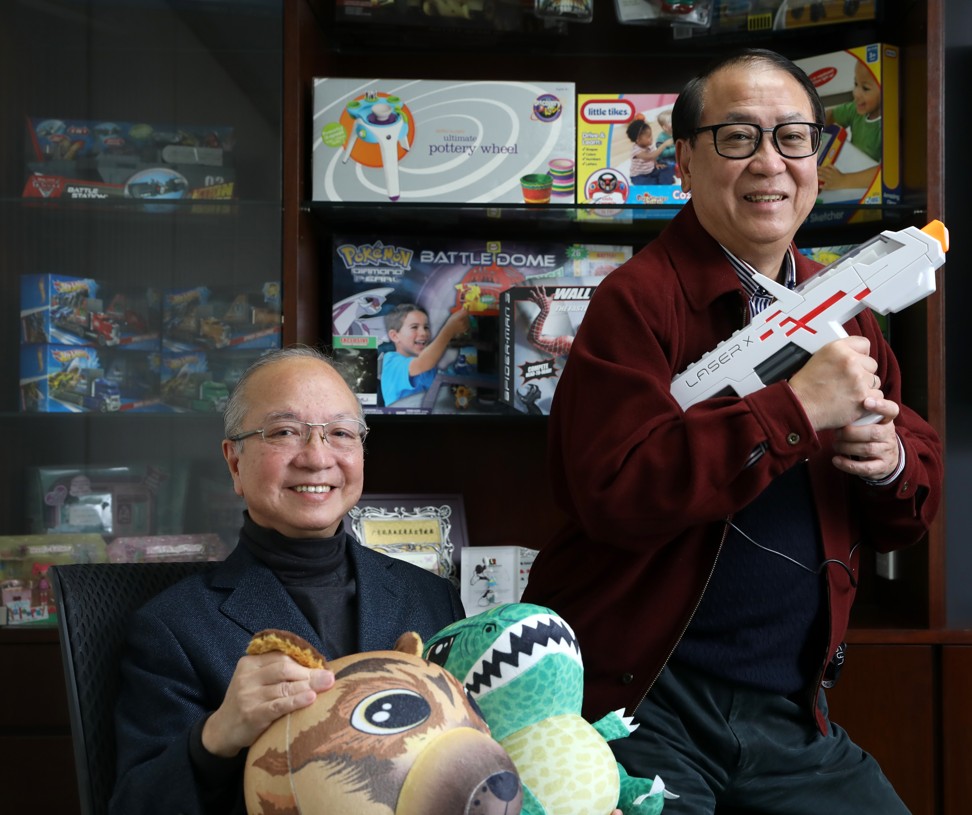
But David Chu Ki-kwan, the 72-year-old boss of toymaker Tai Nam Industrial, set up by his late father in 1949, sees an opportunity for creative young Hongkongers.
“The trade war is a trigger for the industry to transform,” he said. “In our heyday, overseas orders poured in for Hong Kong toy companies, which produced for overseas brands. Now, the changing market means Hong Kong companies must change, for example, by developing their own brands and innovative products.”
Yeung Chi-kong, 74, who retired two years ago from Blue Box International, the toy company he partly owned and which produced the popular Flower Kids Dolls in the 1980s, said: “Hong Kong toy companies need to move on and be trendsetters. They need to shift their mindset to produce their own brands and products, which involves taking risks.”
To that end, Chu and Yeung are among a group of established toymakers encouraging and mentoring younger people who want to get into the business.
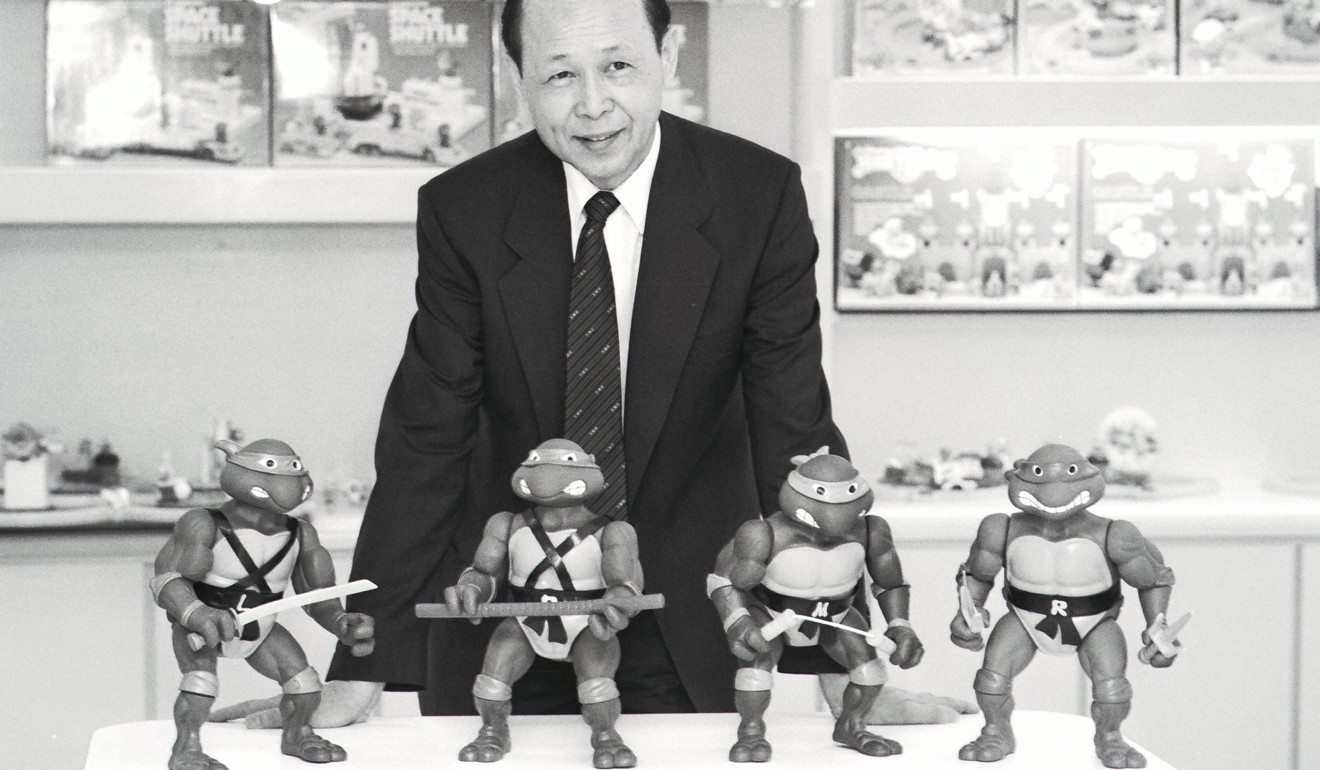
The veteran businessmen started the social enterprise Act Plus Education Foundation (ACT) last year and organised a creative industry design competition which attracted 150 teams. Ten winning teams received HK$450,000 each as start-up funding for their promising projects.
The foundation regularly offers animation courses and subsidises underprivileged youngsters to attend, to help them find jobs after they graduate.
Chu, who is ACT chairman, said that by guiding younger entrepreneurs he hoped to give them a leg up in their careers and in life, while helping to inject new blood into the toy industry.
“A dream is a dream, but it still takes practical efforts to fulfil it,” said Chu, who was among the first wave of the city’s toy entrepreneurs in the 1960s. “We want them to learn and succeed in their business, not just offer them money.”
A huggable bear for lonely hearts
Among the budding toymakers Chu and Yeung have been mentoring is a team from a start-up called HEXA Labs, led by Astrid Cheung Oi-lam, 22.
She and five design school classmates knew little about the business when they came up with the idea for a white, plush toy bear for lonely hearts two years ago.
“The idea of the toy bear came from a partner’s long-distance relationship, and we wanted to create something the couple could hug and take with them anywhere,” Cheung said. “We didn’t have any concept of a business model, production lines and other things.”
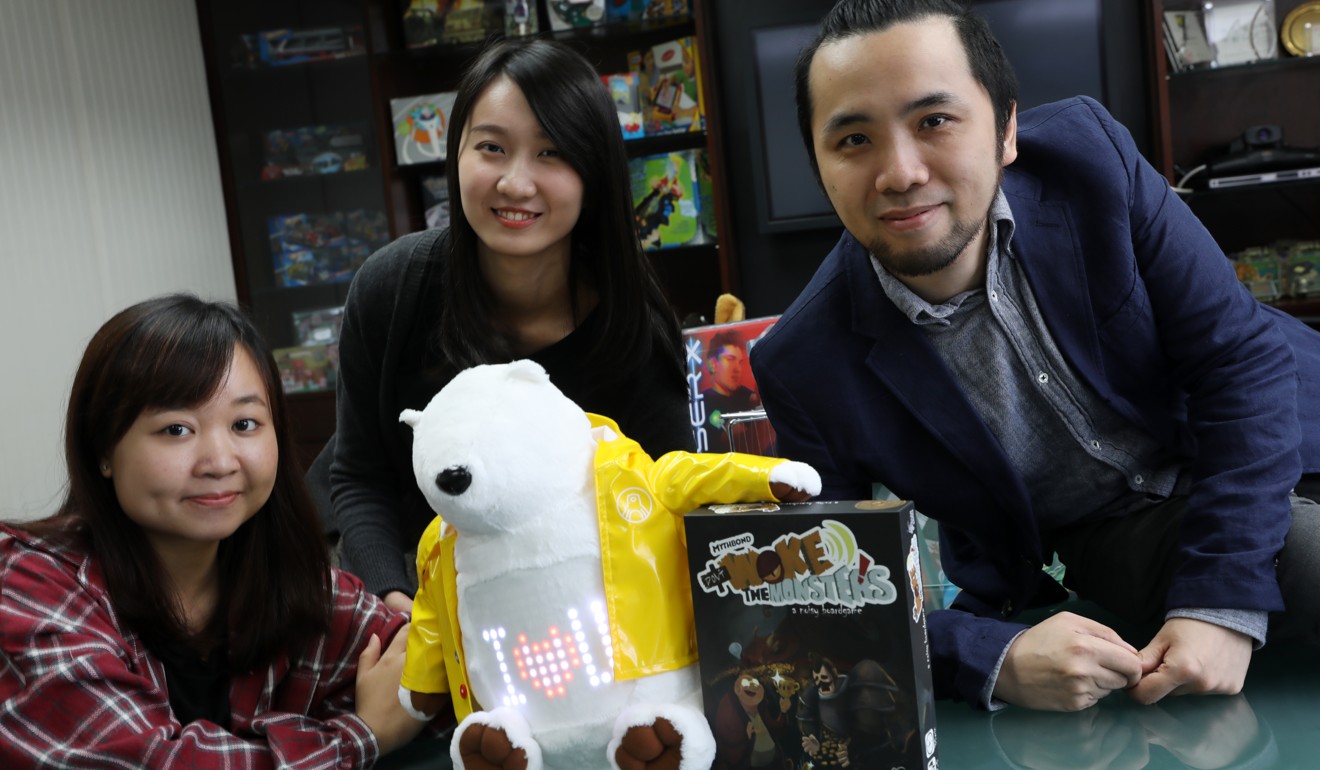
Yeung said the toy bear, with electronic components, was originally too large and bulky, and cost at least HK$1,000, which was too expensive. The HEXA team also planned to sell their bear in Hong Kong only, when there were bigger markets to tap such as the United States, Europe and even mainland China.
He said: “We are helping by connecting them with the right partners for production, improving designs, marketing and even finding them overseas importers.”
Cheung and her team responded by working with their mentors’ expert contacts to refine the design and bring down the cost so the bear could be priced between HK$200 and HK$500 when it goes on sale later this year.
“I am thankful to Mr Yeung and Mr Chu, who share their valuable experience and business contacts with us,” Cheung said.
The veterans have also helped board games start-up Bram Games, led by Lith Fung Ho-yin, who is in his late 20s and dreams of growing his enterprise into a listed company.
He was a video game designer before switching last year to board games and, like the HEXA team, has learned to improve his product design and how to run a business.
ACT then connected him with an established printing company in Hong Kong and he started selling his product in Japan.
“It has been selling well in Japan,” Fung said, adding that he was encouraged by the response so far. “Shoppers have bought the game without even looking at details.”
Hong Kong’s younger generation of toymakers are receiving help and support from elsewhere too.
Toymaker David Leung Wing-yan is vice-president of the Innovative Entrepreneur Association, which launched a scheme last year to help start-ups to promote their brands and products.
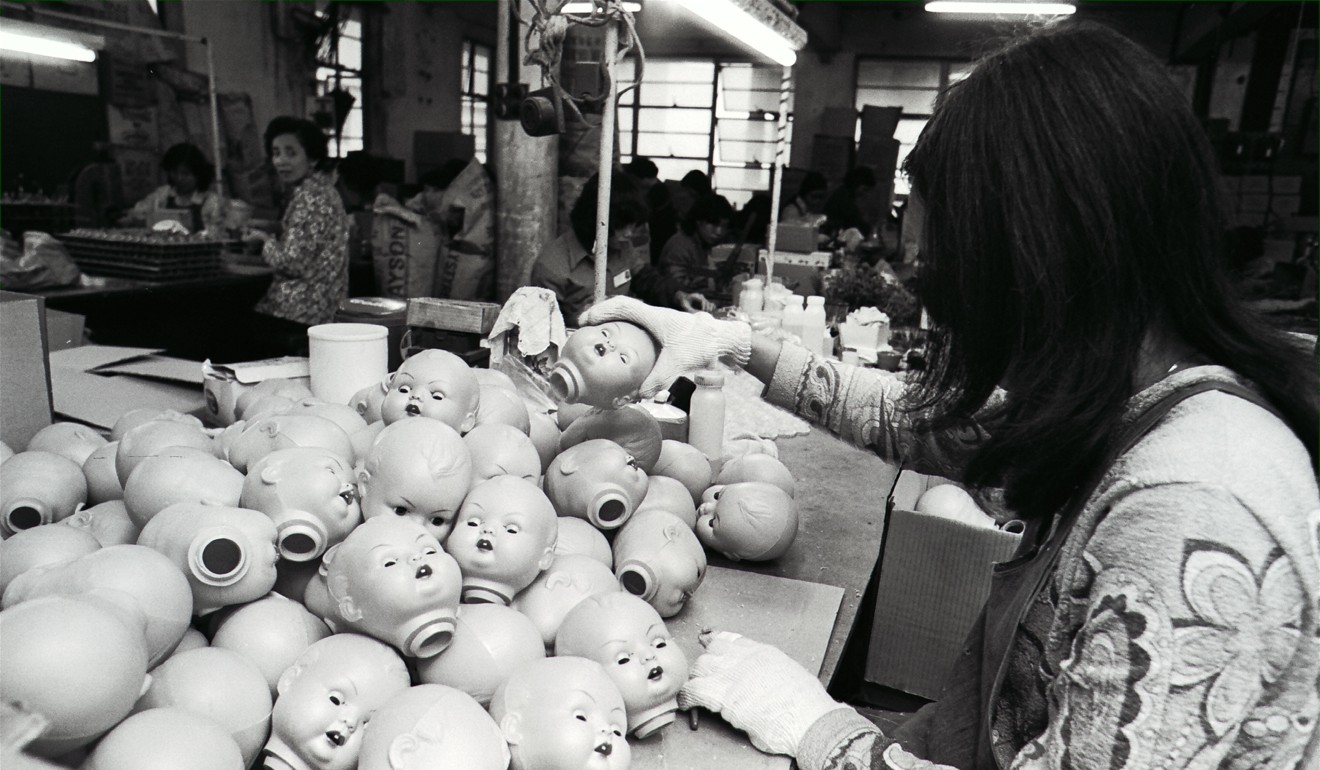
This month alone, the scheme subsidised 40 such firms to participate in a licensing show in the city and offered them training, mentoring and workshops.
“We have a new generation of designers and developers in brands and products. I am confident they will thrive and compete with rivals outside Hong Kong,” Leung said.
To push the industry as a whole to innovate, the Toys Manufacturers’ Association of Hong Kong recently organised workshops connecting members with IT firms at the Hong Kong Science Park in Pak Shek Kok.
Its president, Leung Chung-ming, is managing director of Lung Cheong Digitech, a 55-year-old toy manufacturer that began developing robots for educational purposes a decade ago.
His company reinvests about 3 per cent of its annual revenue into research and development.
Traditional toys vs video games
Meanwhile, children and adults alike are increasingly hooked on electronic games and gadgets.
Euromonitor’s latest forecast shows video games will remain consumers’ favourite and demand is expected to grow at a compound annual rate of 6.8 per cent between 2018 and 2022.
This year will see the battle of traditional toys such as licensed characters from movies such as Captain Marvel, Spider Man: Far From Home, Frozen 2 and Star Wars Episode IX, against electronic games such as Microsoft’s Xbox One X and its cheaper model, Xbox One S, and Nintendo Switch, according to the Hong Kong Trade Development Council.
“The next generation of consumers will be shaped by smart homes,” said Euromonitor senior analyst Jonathan York, pointing to the Amazon Echo and Google Home which have developed a lot of content for children and could teach them how to do their homework.
“They may replace the role of parents!” he quipped.
Some childcare experts, hobbyists and parents are resisting the rush to electronic playthings and gadgets.
Hartmut Wedekind, a professor and scientific director of Helleum, a Berlin-based learning and research centre, said children should be allowed to play with simple toys and encouraged to make their own ones.
He said young children were capable of making a flying toy out of a discarded plastic bottle, a string and a straw, and added: “What teachers should do is create an environment to let children play, use their strengths to finish an activity such as climbing a slope and let them draw their experience through art, so they can build their creativity.”
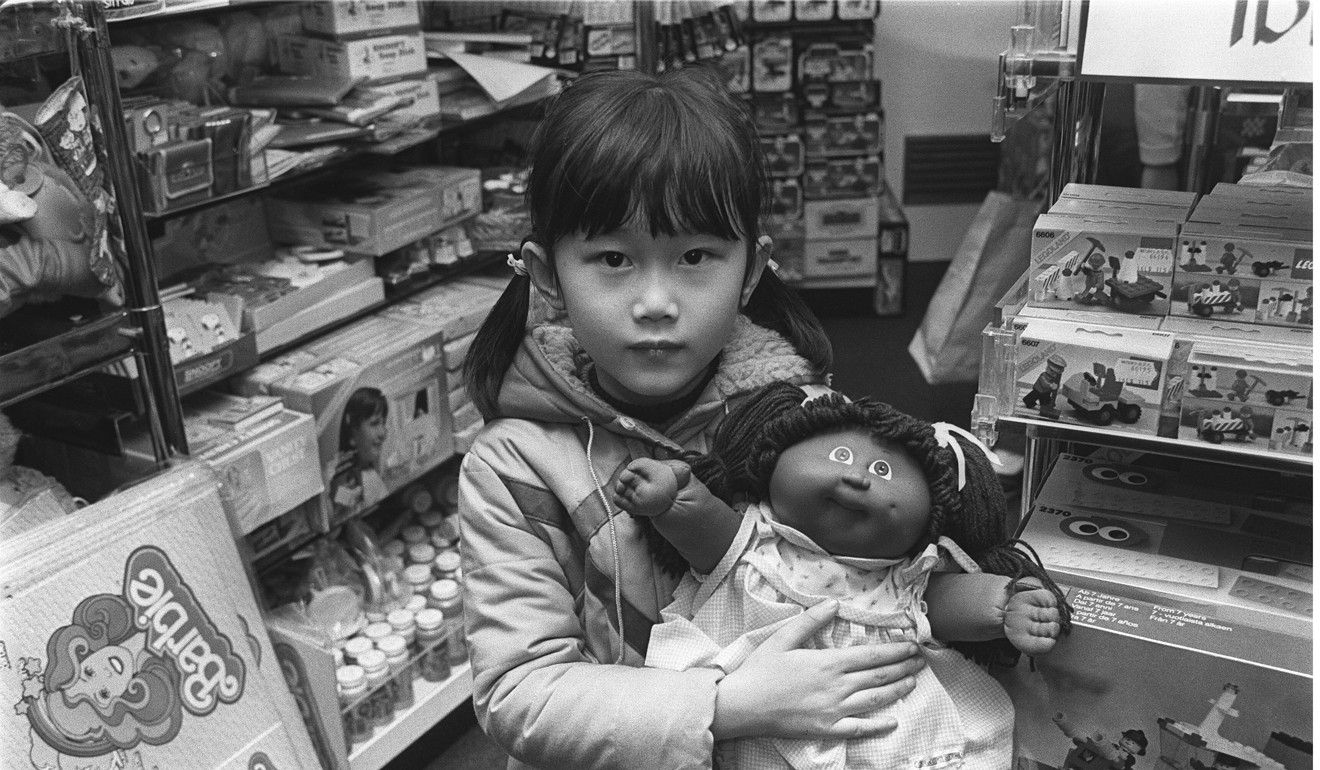
In a tiny 20 sq ft space in Sheung Wan, the Happy Toy Store sells vintage and used items – dolls, cars, plastic double-decker buses, and more – all amassed by owner Chong Hing-fai, 52, over the past three decades.
“Every toy has a story behind it and reflects a piece of the fabric of Hong Kong’s history,” he said.
His toys from the 1950s to the 1970s are priced between HK$5 and more than HK$1,000.
“Parents are too busy to play with their children and give them handsets to play with, which limit the development of their creativity because they just follow preset programs,” he said.
Housewife Joyce Lam Yee-lan, 42, said she was not considering electronic toys for her five-year-old daughter yet. She looks for educational toys and popular conventional ones for her child’s birthday, Christmas and at other times.
“I spend about HK$300-500 a month on toys,” she said. “I want her to read some English-language stories on Peppa Pig and My Little Pony books.”
Perhaps understandably, toymaker David Leung considers toys a necessity. “Whether traditional or electronic, toys can be educational, inspiring and therapeutic. It all depends on the nature of a particular toy and how you use or play with it,” he said.